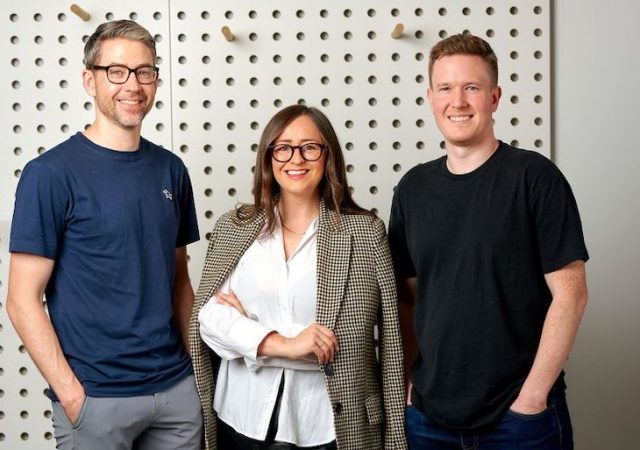According to the proverb, first impressions are the most lasting.
But for new customers if that first experience isn’t a good one, the impression may last longer than the relationship with the vendor. In the US, research found that one third of customers will move to a competitor after just one instance of bad service. Customers can be unforgiving.
The sales process is often the first interaction a brand will have with its users. Tech startups have a major advantage in their ability to sell to virtual customers – and lots of them. They are not limited by the number of sales calls it is possible to make in a day and can reap the benefits of slick online marketing machines with very little, if any, human interaction.

Rick Click Capital’s Benjamin Chong
But in this often-faceless world, the importance of first impressions, a great customer experience and exemplary service delivery are still critical to building loyalty, even if this is partially done via automation. To achieve this level of excellence in onboarding, careful thought and care is as vital to the virtual process as that undertaken in a face-to-face setting.
Startups also have an advantage in the onboarding process. Where it previously made sense to visit a customer site in person to onboard the customer, with most tech startups this can be done remotely, with the benefit of holding back-to-back onboarding sessions and eliminating travel.
There are five critical success factors to onboarding a customer to ensure the foundations are in place for a long and lasting relationship.
Shared responsibility between sales and onboarding teams
The sales team is best positioned to strengthen the onboarding process and ensure the future success of the customer relationship.
It is no surprise that customer retention, or stickiness is better when there is a good level of communication between the sales and marketing and onboarding teams in the early stages of the relationship. The sales and marketing team know the customer and their expectations of the product and how the new technology can help them.
A clear transition plan to the onboarding team will set the relationship up for success and allow the user to quickly find value in the product.
Measure what matters
Knowing what success looks like is the starting point. Often the metrics that define a successful customer interaction are identified in business strategy – these are the precursors to growth of the business and forecasts will most likely be based on customer retention and their usage behaviours after three, six and 12 months.
Measuring the behaviours of early stage users gives a picture of how well customers are adopting the software – the features and products they are using, whether they are taking advantage of core or add on features, how likely they are to share with, and invite other users to join, and of course overall usage metrics. Starting with the end in mind will enable a founder to design an appropriate onboarding process.
If a founder can see from the metrics that the full functionality isn’t being taken advantage of, or users are not inviting their colleagues, this is an opportunity to tackle these challenges with additional training or incentives, and for the founder to ask what needs to be done at an early stage to ensure a great experience.
Instill processes that drive engagement
Research has shown that customers who engage earlier, stay longer. There is a finite window after the sales process closes to get customers on board using a product. Simplicity is key. This starts with a welcome email and some clear instructions to set up the software.
Sophisticated companies will usually hide complexity of configuration and allow for users to access tutorials and training and documentation in a simple, easy to access format.
Assigning a concierge can help the customer migrate to or integrate new software. Customer segmentation is useful to map the onboarding process.
For smaller startups the onboarding process may utilise webinars whereas larger startups may use online tutorials. As volume picks up and a lower priced product is rolled out, founders will need to consider how to automate this and allow the customer to self-serve. In-product guidance will also allow users to learn whilst using the product.
Anticipate and overcome challenges
Introducing new technology carries compatibility risks for any business. Darling of the accountancy software world, Xero sets the gold standard in integrating its products with existing technology by offering to manually transfer data to their platform if compatibility issues arise. Apple is another company that makes it easy to switch from product to product, so long as it’s Apple!
For tech founders an audit of their new customers’ current software can identify any potential barriers preventing or hampering the integration of the new technology. This will allow founders to facilitate the conversion.
The big question for founders is, how can I make it easy for my customers to switch?
Follow up promptly and repeatedly
If adoption is slower than a founder expects, then a “wait and see” approach rarely pays off.
In some tech companies the onboarding team may have a customer success function to constantly monitor whether people have logged in and set up their accounts. The customer success managers will then follow-up, taking proactive action when users don’t log in or fully utilise the functionality. Users should also have the ability to follow-up with an actual person if required.
And finally, the onboarding process should be dynamic, ongoing and span the lifecycle of the customer.
A great onboarding program positions the tech company as one that cares about the success of each user. Measuring, monitoring, anticipating and responding can only be achieved when a company is close to its customers.
A business that shows it understands the strategic impact of onboarding on business success will find itself in the best possible position for achieving the longer-term business objectives.
- Benjamin Chong is a partner at venture capital firm Right Click Capital, investors in high- growth technology businesses.




















Trending
Daily startup news and insights, delivered to your inbox.